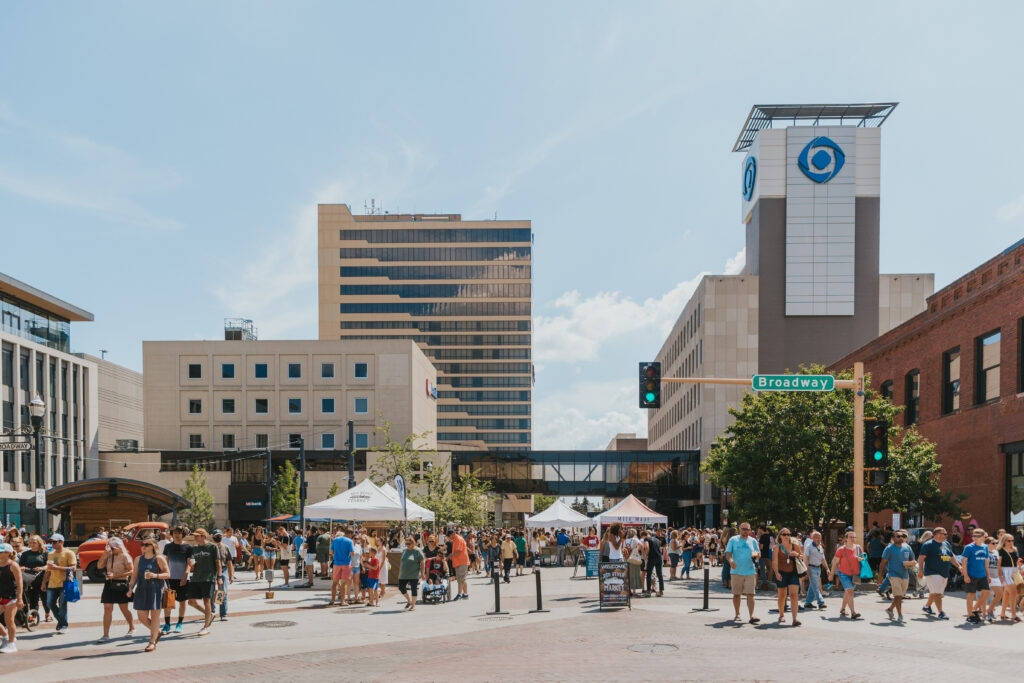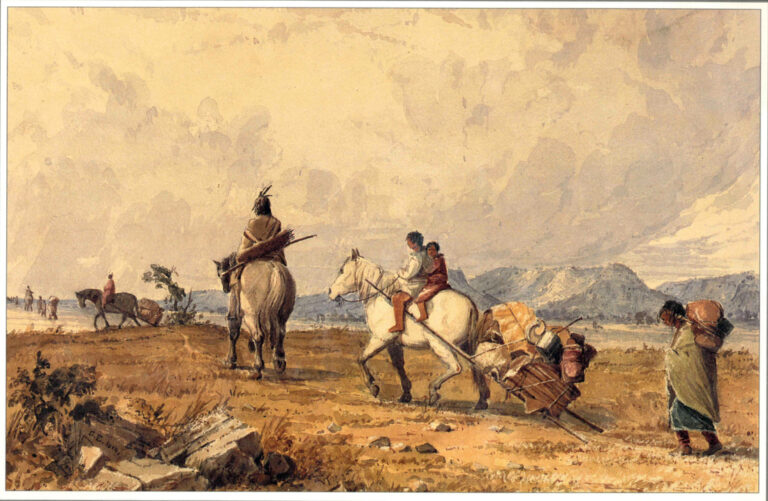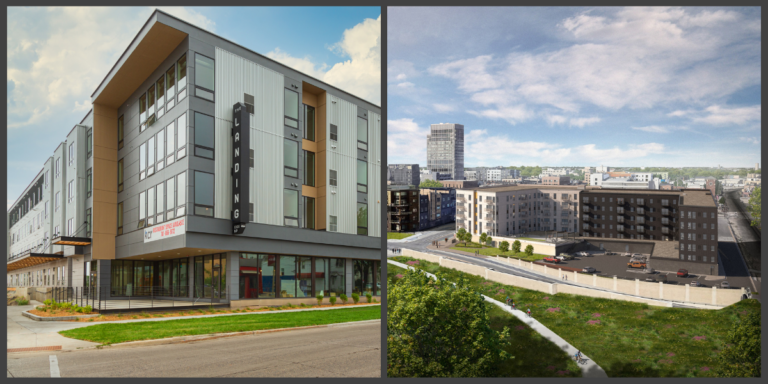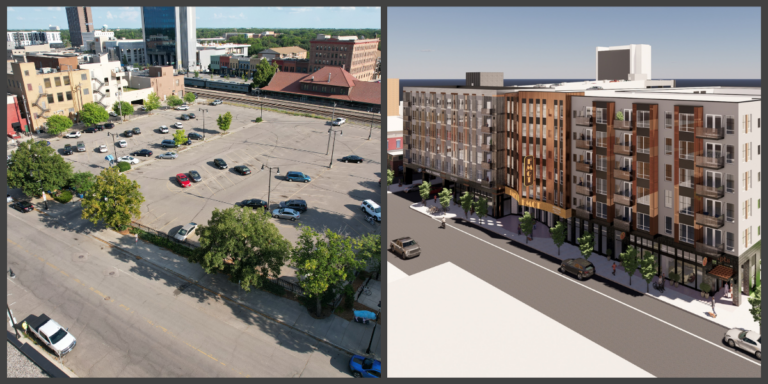
| By Mari Hall |
The featured image is by Morgan Allora/Studio Freshly.
With its strong start-up ecosystem and expansive network of innovators, downtown Fargo is the cornerstone of the metro area’s entrepreneurship. A hefty 99% of North Dakota businesses are small businesses, a reality that is directly reflected in Fargo’s central business district. From long-standing neighborhood anchors to brand-new retail ventures, downtown Fargo is home to hundreds of restaurants, coffee shops, boutiques, galleries, and experiences that can’t be found anywhere else.
But this spirit of entrepreneurship runs deeper than many might think. In fact, it’s built on a bedrock foundation of entrepreneurial endeavors that goes back centuries and has played a pivotal role in shaping the region.
Long before the founding of Fargo, before the invention of the steamboat and the railroad, the Red River Valley was already an economic crossroads for a multitude of Indigenous communities.
“Makoce Kin Ihdago Manipi. They leave marks as they come through here.”
— Dakota phrase
Ihdago Manipi—an exhibit on display through 2024 at the Hjemkomst Center curated by the Historical and Cultural Society of Clay County (HCSCC)—highlights the region’s Indigenous history, demonstrating how the Red River Valley served as a central transportation hub for the Dakota, Ojibwe, and Métis peoples in particular. “These communities thrived, using extensive trail and waterway systems to build an economy that spanned the continent,” according to the HCSCC’s exhibit summary.

Seth Eastman, Indians Travelling, 1850
This watercolor painting shows a group of Dakota people traveling on horseback and pulling supplies using a travois, an innovative A-frame sledge that was well suited to the Northern Plains terrain.
As Europeans explored North America, they too realized the significance of the Red River Valley. By the early 1800s, the long-standing Indigenous trade networks became a crucial element of the fur trade, connecting the Northern Plains with French and British transatlantic trade.
By the mid-1800s, both steamboats and railroad transit were revolutionizing American trade and enabling the United States to stretch ever westward. Here, too, the Red River Valley served as a crossroads, this time for north-south steamboat transit and east-west railroad transit. The planned route for the Northern Pacific Railroad from Lake Superior to the Pacific Ocean was actually a determining factor in the locations chosen for both Fargo and Moorhead, and the Northern Pacific Railroad Company played a key role in establishing the first settlement in what would become Fargo.
By the time Fargo was formally founded in 1871, it was simply the next phase in the region’s long history of entrepreneurial commerce. The spirit of innovation has remained a core part of the community during its 150-year history, an idea most recently captured by Jacqui Agate in National Geographic.
In the early 1900s, Northern Pacific Avenue—named for the foundational railroad it runs parallel to—was home to “Machinery Row”, where at least 19 industrial facilities produced ever-advancing agricultural equipment.
Today, this legacy is continued by organizations like Grand Farm and Bushel, downtown firms that aim to innovate agriculture with 21st century technology.
Although much of Machinery Row was demolished in the mid- to late 20th century and replaced with parking lots in an effort to accommodate car-centric lifestyles, some buildings from that era of Fargo’s history have survived. Among them is the Plains Art Museum, which occupies a former harvester machinery warehouse.
The Plains Art Museum has become an essential steward for the Red River Valley’s entrepreneurial spirit in many ways but especially by making Indigenous artists and voices core to their mission. The annual Indigenous Arts Fair—coming up on April 27th and 28th—is a prime example of how they put the spotlight on Indigenous creativity.
As downtown Fargo has undergone a 21st century renaissance, the area’s trailblazing roots have continued to flourish. Spaces like Emerging Prairie’s Prairie Den and the brand-new Maven Collective, among many others, further promote the neighborhood’s powerful synergy for new ventures and innovation. With more than 21,000 employees working in downtown Fargo, new ideas and plans for the future are sparked every day.
At Kilbourne Group, honoring the past is an integral part of every project, and the early history of Fargo has been core to several of our projects. The foundational role of the railroad was incorporated into The Landing at 1001 NP, and the river-based transit has been core to the development of RiverHouse, which is set to open this fall.

Left: The Landing at 1001 NP (PC: Dan Francis Photography); Right: Rendering of RiverHouse (PC: JLG Architects)
Our latest project, The Avery, will break ground on May 1st, and its development has been built upon the legacy of Machinery Row. Even its name is an homage to Avery Tractor Company, which once occupied the site.

Left: Aerial photo of NP Avenue lot (PC: iSight Drone Services); Right: Rendering of The Avery (PC: ESG Architects)
Through preserving historic buildings, incorporating Fargo’s history into new projects, and renewing the community’s focus on Indigenous voices, downtown Fargo continues to carry the spirit of innovation and entrepreneurship into the future. By looking to this important legacy, this neighborhood will continue to thrive for generations to come.